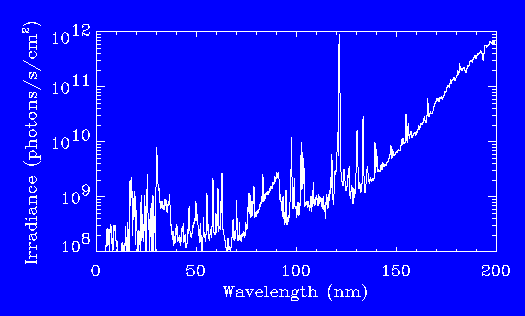Science Objectives
One of the fundamental TIMED mission objectives is to understand the energetics in the mesosphere, lower thermosphere and ionosphere (MLTI). Solar radiation below 200 nm is completely absorbed in the Earth’s mesosphere and thermosphere. Changes in the amount of solar radiation, which range from 20% at the longer wavelengths to factors as much as 1000 at the shorter wavelengths, result in corresponding changes in the photochemistry, dynamics, and energy balance of the upper atmosphere. A detailed quantitative understanding of atmospheric radiative processes, including changes in the solar ultraviolet irradiance arising from flares, solar rotation (27 day), or the 11 year solar cycle, is fundamental to the TIMED investigations. The daily measurement of the full-disk solar vacuum ultraviolet (VUV) irradiance by the SEE directly supports the TIMED mission requirement to measure the sources of energy into the MLTI.
The primary science objectives for SEE are to accurately and precisely determine the solar VUV absolute irradiance and variability during the TIMED mission, to study the solar-terrestrial relationships utilizing atmospheric models, and to improve proxy models of the solar VUV irradiance. The VUV range of 0 to 200 nm includes the soft x-ray (XUV) from 0 to 30 nm, the extreme ultraviolet (EUV) from 0 to 120 nm, and the far ultraviolet (FUV) from 120 to 200 nm.
Solar irradiance data will be provided to the TIMED science team and the solar-terrestrial community in general, and will be integrated into the NCAR Thermosphere-Ionosphere-Mesosphere-Electrodynamics General Circulation Model (TIME-GCM) for solar-terrestrial studies. The primary SEE data product is its Level 3 data product which includes a solar irradiance spectrum in 1 nm intervals on 0.5 nm centers and the irradiance of the brighter 52 emissions in the solar VUV spectrum.


